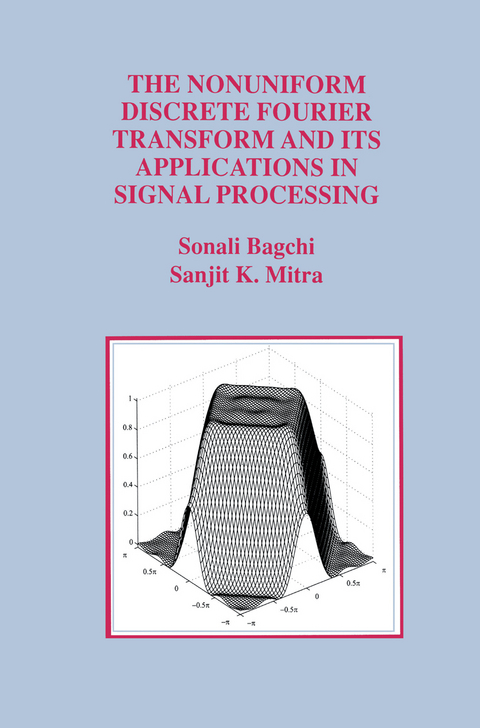
The Nonuniform Discrete Fourier Transform and Its Applications in Signal Processing
Springer-Verlag New York Inc.
978-1-4613-7234-9 (ISBN)
1. Introduction.- 1.1 Overview.- 1.2 Discrete Fourier Transform.- 1.3 Chirp z-transform.- 1.4 Subband Discrete Fourier Transform.- 1.5 Computation of Nonuniformly Spaced Frequency Samples.- 1.6 Summary.- 2. The Nonuniform Discrete Fourier Transform.- 2.1 Basic Concepts.- 2.2 Properties of the NDFT.- 2.3 Computation of the NDFT.- 2.4 Subband NDFT.- 2.5 The 2-D NDFT.- 2.6 Summary.- 3. 1-D FIR Filter Design using the NDFT.- 3.1 Introduction.- 3.2 Existing Methods for Frequency Sampling Design.- 3.3 Proposed Nonuniform Frequency Sampling Design.- 3.4 Results.- 3.5 Summary.- 4. 2-D FIR Filter Design using the NDFT.- 4.1 Introduction.- 4.2 Existing Methods for 2-D Frequency Sampling.- 4.3 Proposed 2-D Nonuniform Frequency Sampling Design.- 4.4 Square Filter Design.- 4.5 Circularly Symmetric Filter Design.- 4.6 Diamond Filter Design.- 4.7 Ellipticaily-Shaped Lowpass Filter Design.- 4.8 Applications of 2-D Filters.- 4.9 Summary.- 5. Antenna Pattern Synthesis with Prescribed Nulls.- 5.1 Introduction.- 5.2 Existing Methods for Null Synthesis.- 5.3 Proposed Null Synthesis Method.- 5.4 Design Examples and Comparisons.- 5.5 Summary.- 6. Dual-Tone Multi-Frequency Signal Decoding.- 6.1 Introduction.- 6.2 Background.- 6.3 Proposed DTMF Decoding Algorithm Using the Subband NDFT.- 6.4 Results and Comparisons.- 6.5 Summary.- 7. Conclusions.- References.
| Erscheint lt. Verlag | 8.10.2012 |
|---|---|
| Reihe/Serie | The Springer International Series in Engineering and Computer Science ; 463 |
| Zusatzinfo | XIV, 208 p. |
| Verlagsort | New York, NY |
| Sprache | englisch |
| Maße | 155 x 235 mm |
| Themenwelt | Mathematik / Informatik ► Informatik |
| Mathematik / Informatik ► Mathematik | |
| Technik ► Elektrotechnik / Energietechnik | |
| Technik ► Nachrichtentechnik | |
| ISBN-10 | 1-4613-7234-8 / 1461372348 |
| ISBN-13 | 978-1-4613-7234-9 / 9781461372349 |
| Zustand | Neuware |
| Haben Sie eine Frage zum Produkt? |
aus dem Bereich


